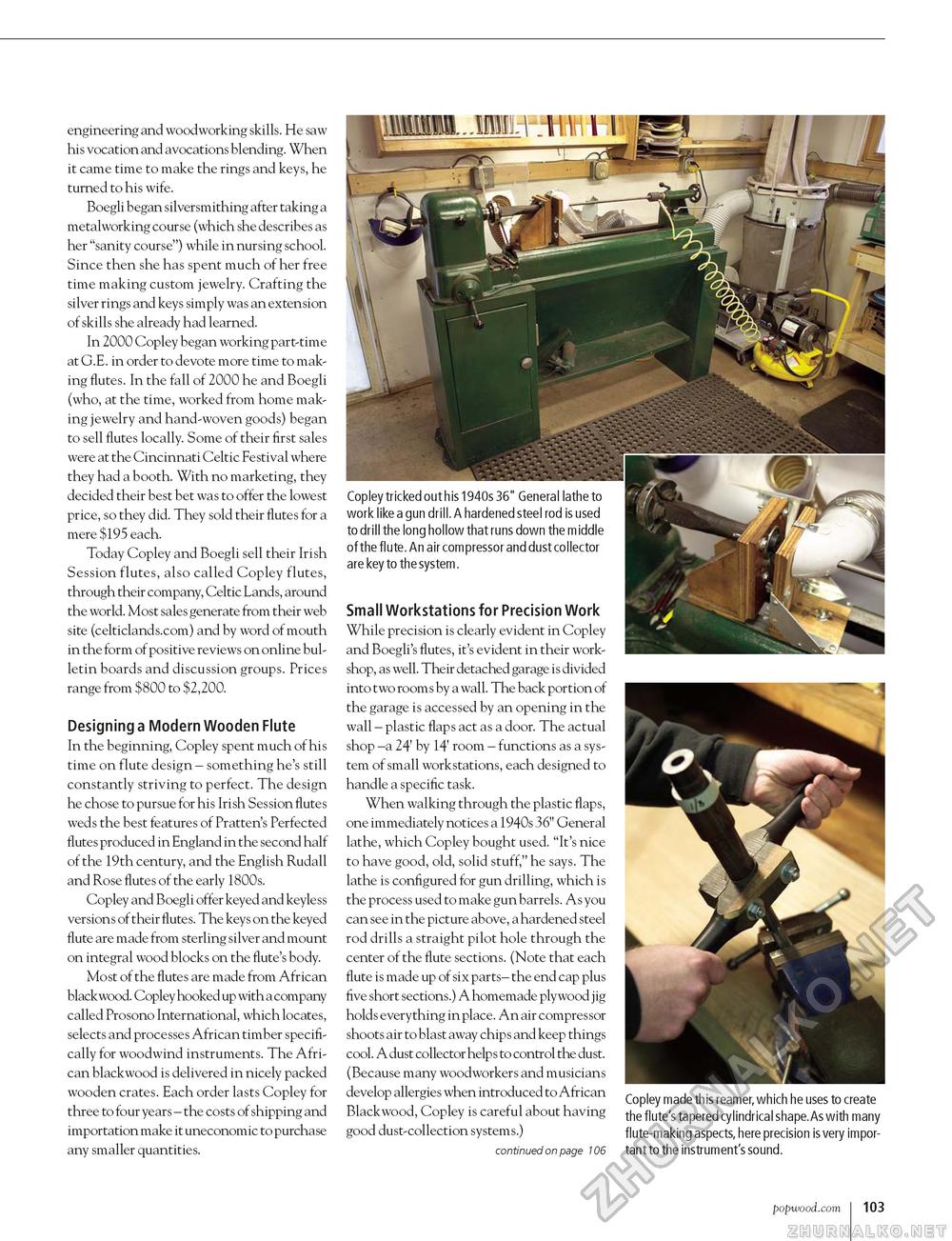Popular Woodworking 2005-10 № 150, страница 107
engineering and woodworking skills. He saw his vocation and avocations blending. When it came time to make the rings and keys, he turned to his wife. Boegli began silversmithing after taking a metalworking course (which she describes as her "sanity course") while in nursing school. Since then she has spent much of her free time making custom jewelry. Crafting the silver rings and keys simply was an extension of skills she already had learned. In 2000 Copley began working part-time at G.E. in order to devote more time to making flutes. In the fall of 2000 he and Boegli (who, at the time, worked from home making jewelry and hand-woven goods) began to sell flutes locally. Some of their first sales were at the Cincinnati Celtic Festival where they had a booth. With no marketing, they decided their best bet was to offer the lowest price, so they did. They sold their flutes for a mere $195 each. Today Copley and Boegli sell their Irish Session flutes, also called Copley flutes, through their company, Celtic Lands, around the world. Most sales generate from their web site (celticlands.com) and by word of mouth in the form of positive reviews on online bulletin boards and discussion groups. Prices range from $800 to $2,200. Designing a Modern Wooden Flute In the beginning, Copley spent much of his time on flute design - something he's still constantly striving to perfect. The design he chose to pursue for his Irish Session flutes weds the best features of Pratten's Perfected flutes produced in England in the second half of the 19th century, and the English Rudall and Rose flutes of the early 1800s. Copley and Boegli offer keyed and keyless versions of their flutes. The keys on the keyed flute are made from sterling silver and mount on integral wood blocks on the flute's body. Most of the flutes are made from African black wood. Copley hooked up with a company called Prosono International, which locates, selects and processes African timber specifically for woodwind instruments. The African blackwood is delivered in nicely packed wooden crates. Each order lasts Copley for three to four years - the costs of shipping and importation make it uneconomic to purchase any smaller quantities. Copley tricked out his 1940s 36" General lathe to work like a gun drill. A hardened steel rod is used to drill the long hollow that runs down the m iddle of the flute. An air compressor and dust collector are key to the system. Small Workstations for Precision Work While precision is clearly evident in Copley and Boegli's flutes, it's evident in their workshop, as well. Their detached garage is divided into two room s by a wall. The back portion of the garage is accessed by an opening in the wall - plastic flaps act as a door. The actual shop -a 24' by 14' room - functions as a system of small workstations, each designed to handle a specific task. When walking through the plastic flaps, one immediately notices a 1940s 36" General lathe, which Copley bought used. "It's nice to have good, old, solid stuff," he says. The lathe is configured for gun drilling, which is the process used to make gun barrels. As you can see in the picture above, a hardened steel rod drills a straight pilot hole through the center of the flute sections. (Note that each flute is made up of six parts- the end cap plus five short sections.) A homemade plywood jig holds everything in place. An air compressor shoots air to blast away chip s and keep things cool. A dust collector helps to control the dust. (Because many woodworkers and musicians develop allergies when introduced to African Blackwood, Copley is careful about having good dust-collection systems.) continued on page 106 Copley made this reamer, which he uses to create the flute's tapered cylindrical shape. As with many flute-making aspects, here precision is very important to the instrument's sound. popwood.com i 103 |








